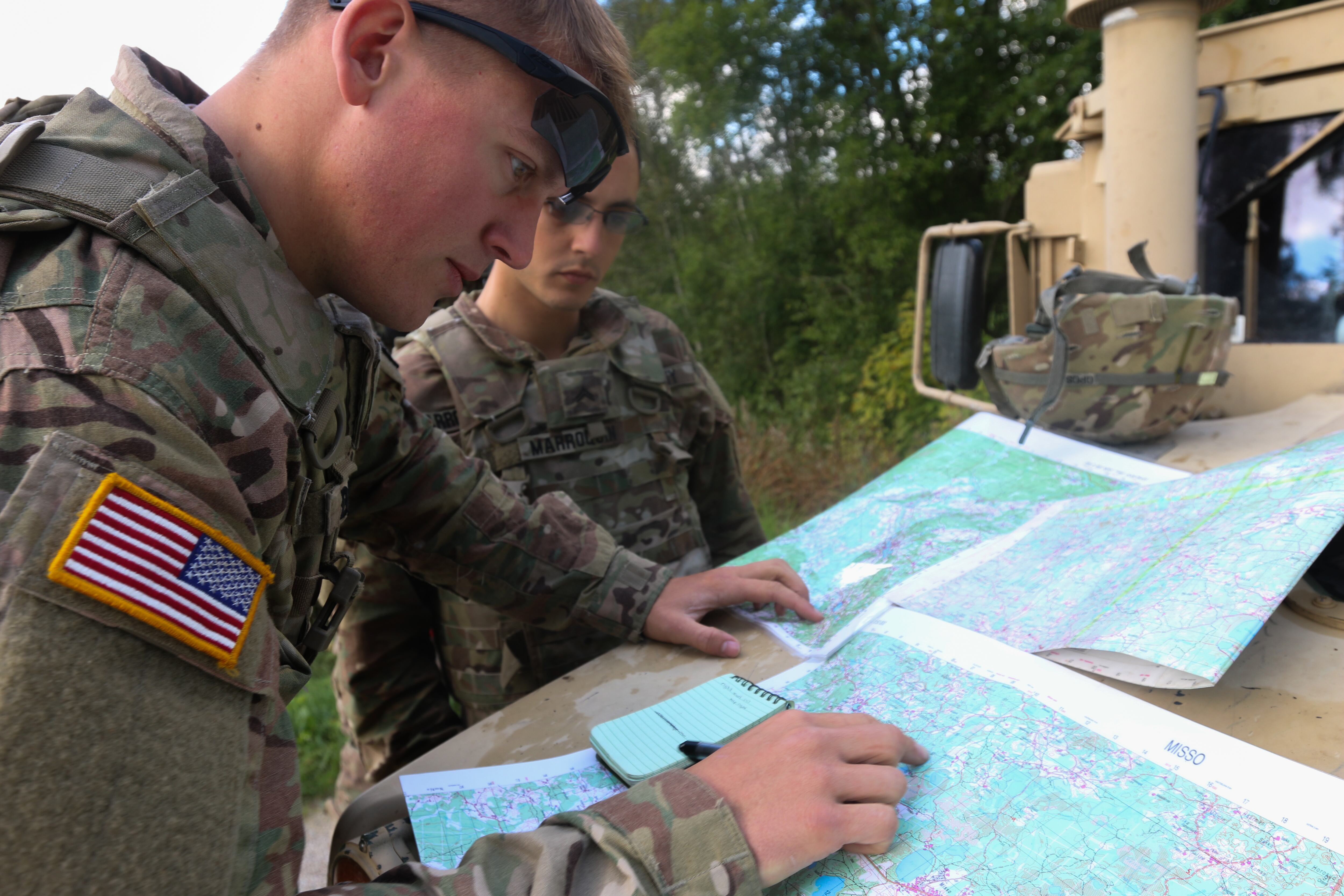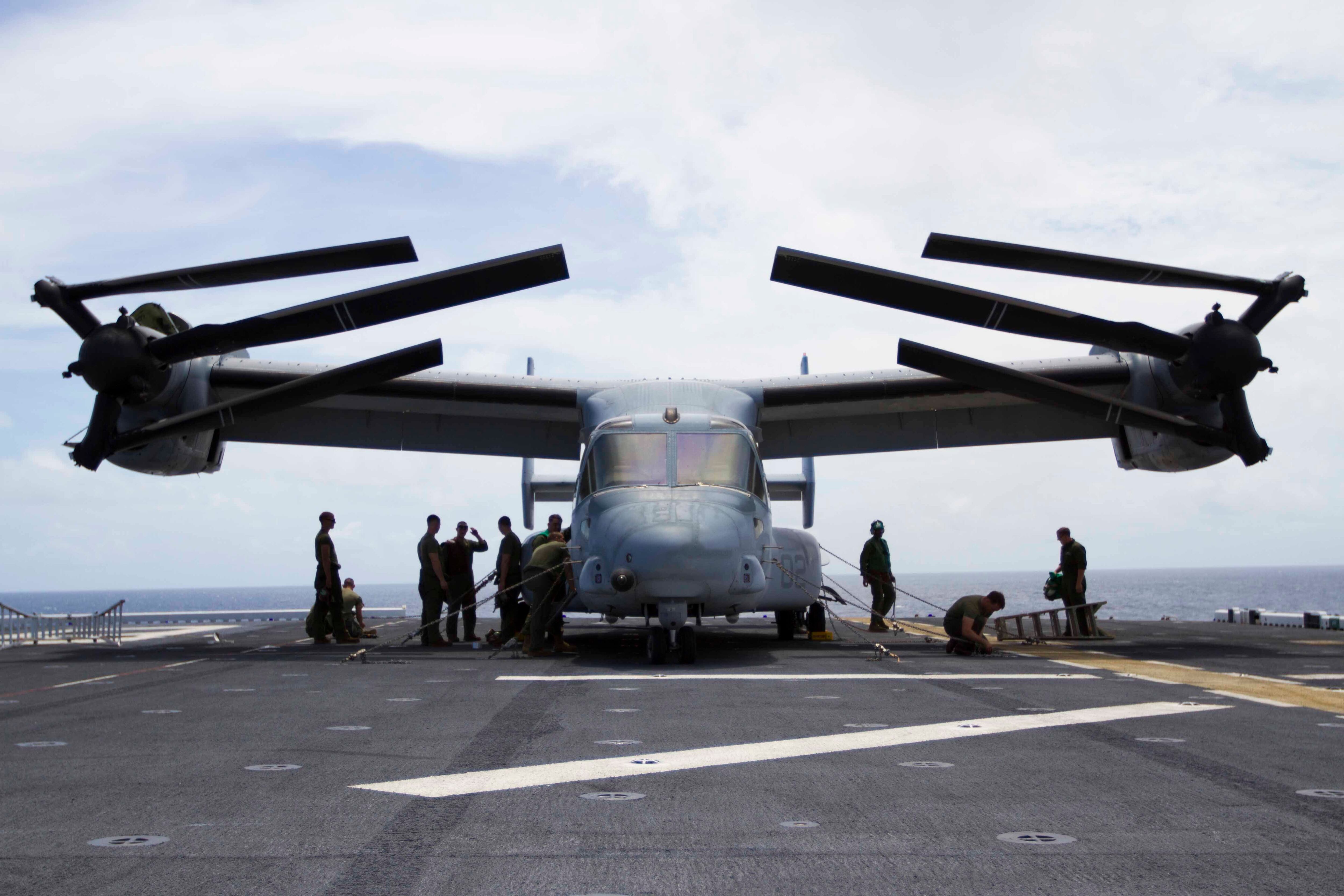![SP-MAGTF CR flightline mechanics replace prop-rotor hub assembly on MV...[ID=70980482] ID=70980482](http://www.gannett-cdn.com/-mm-/8ea73cd24201366bd8853db2ce641046259ab772/c=119-0-1981-1400&r=115x86/local/-/media/2015/05/07/GGM/MilitaryTimes/635666290147327357-MAR-Osprey-growth-8.JPG)
Within the next four years, the service intends to make three key moves involving this versatile aircraft.
First, Marine Corps has plans to stand up two new Osprey squadrons will be activated, one in southern California and another in North Carolina. Second, the service will complete the transition of the last of its Vietnam-era CH-46 Sea Knights squadron personnel to tilt-rotors, having formally moved the last Phrog squadron to the VMM-designation in April. And finally, officials are laying plans to create detachable Osprey squadrons, which can function as smaller, distributed units that pushing ahead complete the transition of several remaining squadrons to Osprey aircraft, and complete an augment initiative that will require additional end strength result in a manpower plus-up for each existing Osprey squadron.
For career-minded Marines, all of this And all that means that it's a good time to go Osprey.
In April, officials released an a Marine administrative message to Marines detailing released last month, aviation officials laid out career transition paths for those coming from the Corps' CH-46 Sea Knight squadrons, which will be which will have phased out completely completed by the end of September this fiscal year. It encourages those wishing to "[CH-46] Marines desiring to re-enlist to apply for lateral moves immediately. should submit a lateral move immediately. package as early as possible and will compete with all other Marines that are applying for retention/lateral move into the chosen [primary military occupational specialty]," reads the message, signed by Brig. Gen. Craig Timberlake, the director of the Marines' Manpower Management Division.
The message, approved by Brig. Gen. Craig Timberlake, director of the Marines' Manpower Management Division in Quantico, Virginia, lays out retraining paths for other Marines seeking to move into interested in lateral moves to the Osprey community, and offers an early-out end-of-active-service option for those completing their first term.
But with the Marines' prized tilt-rotor filling key crisis response, training and tactical recovery roles in the Middle East and around the globe, the requirement for V-22 pilots and crew members isn't expected to diminish.
As laid out in the Marines' 10-year aviation plan, released earlier this year, the Corps plans to stand up two new active Osprey squadrons: VMM-362, expected to become active at Marine Corps Air Station Miramar, California, in fiscal 2018; and VMM-212, scheduled to begin operations at Marine Corps Air Station New River, North Carolina, in fiscal 2019.
But the existing squadrons will start to expand significantly by 2017, if all goes as planned. That's when the Marines plan to start adding a detachment capability to each of its squadrons, allowing units to divide and operate independently in several regions, said Maj. Douglas Thumm, a former plans officer for the MV-22 program who now commands an Osprey squadron at New River.
"In order to operate 24 hours a day in two different locations at the same time, you have to have a certain number of people and a certain amount of equipment," Thumm said during an April interview at the Pentagon last month. "So we're getting a few more people in those squadrons and we're getting more equipment in those squadrons to be able to do those operations different places."

Thumm estimated that each of the Corps' 18 active-component and two reserve squadrons would need an additional 25 personnel to be able to provide this detachment capability. Those additional people, he said, will consist of maintenance personnel, enlisted aircrew and pilots – more than 400 jobs in all.
Thumm said the Marine Corps would gain the additional Osprey manpower in part by transferring Marines from other aviation units, similar to the way it is moving pilots and crewmembers from the retiring EA-6B Prowler into other fields, including unmanned aircraft specialties.
But, he said, there will also be opportunities for new enlisted Marines and officers to enter the field, though it's not immediately clear how many might be required.
"We need to have new pilots, new aircrew new maintainers that are coming in from the lowest ranks as well," Thumm said. "And we grow all of those through the different ranks so we have the rank spread and we have the requisite leadership and qualifications that we need for those detachments."

Crews perform maintenance aboard the flight deck of the amphibious assault America.
Photo Credit: Cpl. Donald Holbert/Marine Corps
Also up in the air, he said, is the possibility of bonuses or other incentives that may accompany the anticipated growth trend. Such a move would not be unusual for the Marine Corps, however; MV-22 tiltrotor crew chiefs, for example, saw a re-enlistment bonus increase in this fiscal year of about $5,000. Bonuses now range from $24,500 to nearly $31,000, based on time in service.
As the Osprey continues to pick up key missions — such as tactical recovery of aircraft and personnel for U.S. troops in the Middle East — it's safe to predict the stock of the elite aircraft will continue to increase go up.
"It's very exciting for us," Thumm said, "in a time the Marine Corps is coming down, we are actually expanding because of the missions that we're executing."





